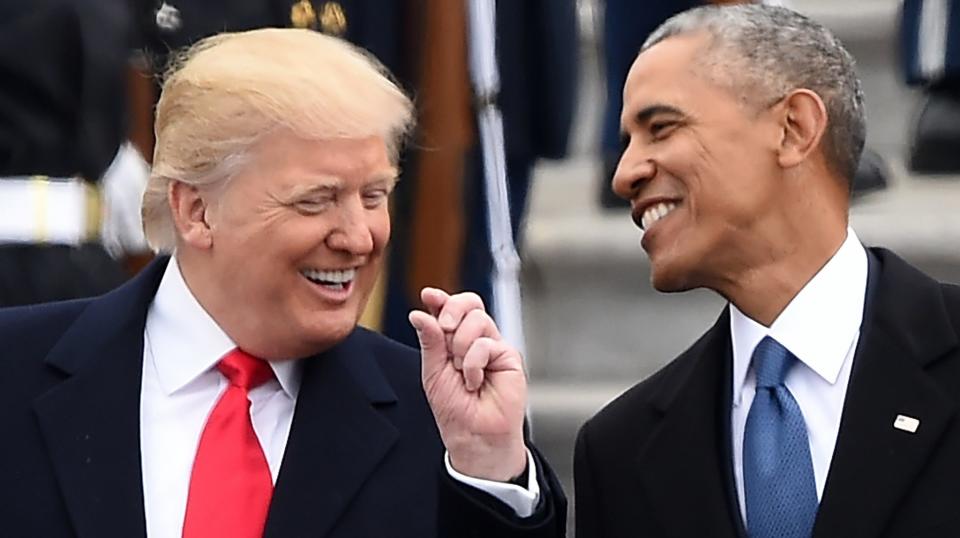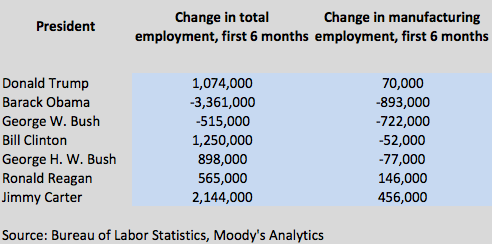One way Trump is outperforming other presidents
Six months into his presidency, Donald Trump has one big thing going for him: a robust job market.
Employers added 209,000 jobs in July, while the unemployment rate fell to a remarkably low 4.3%. During Trump’s first six months in office, the US economy added nearly 1.1 million jobs, earning Trump a B+ for the state of the economy under his watch on the Yahoo Finance Trumponomics Report Card.
Before Trump critics freak out—yes, it’s obviously true Trump inherited an improving economy from his predecessor, Barack Obama. Underlying factors such as strong corporate profits, low interest rates and an improving global economy explain most of the job gains, rather than any policies Trump has put into place. Trump, in fact, has faltered on virtually every major policy issue he’s undertaken, with few accomplishments to crow about so far.

But every president inherits his predecessor’s economy—and eventually gets credit or blame for the direction it takes, whether deserved or not.
We built the Yahoo Finance Trumponomics Report Card, using data provided by Moody’s Analytics, to measure the Trump economy compared with six prior presidents on six key measures. Here’s how Trump compares on jobs:

For both total employment and manufacturing jobs, Trump ranks third highest out of seven presidents. Job growth was slightly stronger during Bill Clinton’s first six months, in 1993. During Jimmy Carter’s first six months, in 1977, employers added 2.1 million jobs, a huge number even more impressive given that the total US population was about one-third smaller back then.
Carter and Clinton were both lucky beneficiaries of a business cycle they had no control over. A recession ended in 1975, with a snapback in place by the time Carter took office in 1977. The eight-month recession that ran from 1990 to 1991 was just strong enough to doom George H. W. Bush’s bid for a second term, but the recovery that began in 1991 was in full swing by the time Clinton took office.
Carter’s presidency didn’t end well. A short recession began in early 1980, contributing to Carter’s reelection defeat. Job growth averaged a blistering 325,000 per month during Carter’s first year in office, but a meager 13,000 per month during his last year. Clinton’s luck lasted longer, with no recession during his eight years in office and strong, consistent job growth throughout.
The worst performer on jobs at the six-month point was Barack Obama—also because of timing Obama had no control over. Obama took office in the midst of the worst recession in 70 years, with the economy losing 4.3 million jobs during his first 12 months in office. Job growth didn’t turn positive until Obama’s fourth year, which was apparently okay with voters, since they gave him a second term. During that second term, employers added an average of 213,000 new jobs per month, creating the momentum that Trump is now enjoying.
What matters most for Trump isn’t what happens during his first six or 12 months. It’s keeping job growth humming into the final year of his first term. That’s when voters will render the ultimate judgment on the Trump economy and decide whether they want more of it or would prefer somebody else take the reins.
Confidential tip line: [email protected]. Encrypted communication available.
Read more:
Rick Newman is the author of four books, including Rebounders: How Winners Pivot from Setback to Success. Follow him on Twitter: @rickjnewman
